Learn how to change gears on a motorcycle smoothly and safely with our expert guide
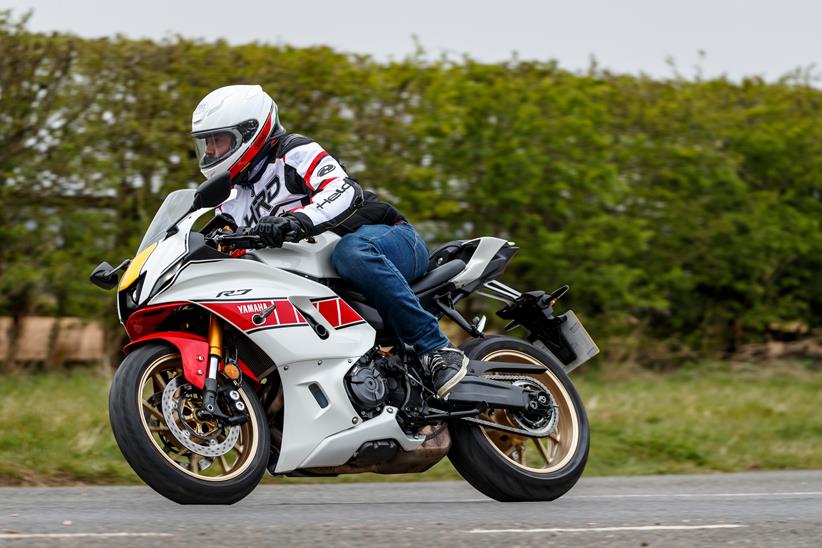
If you’re learning to ride, the likelihood is that you’ll need to know how to change gears on a motorbike. While there are a handful of automatic, hybrid and electric motorbikes and quite a few twist-and-go scooters out there, the overwhelming majority of motorcycles have manual gearboxes.
Thankfully, unlike manual gearboxes on cars, there isn’t a huge amount of variation in the layout of motorcycle gearboxes, which makes these beginner tips fairly universal. They pretty much all follow the same pattern, which is known as ‘one down, five up’.

What this means is that from neutral (no gear selected – usually accompanied by a green ‘N’ light on the instruments), first gear is found by pushing the gear lever down with your left foot. To reach second gear, you hook your toe underneath the lever and pull it up, through neutral and into second.
Before you start, it’s worth noting that you’ll want to ensure you’re wearing the best motorcycle boots for the job. Ideally, flexible ones with good toe protection.
Using a clutch to change gears on a motorbike
But you won’t be able to change gears without using the clutch. This is a device that effectively disconnects the engine from the gearbox, allowing you to change gear. It’s operated by the lever on the left handlebar. Pull it in, and you disconnect the engine. Let it out and the engine will re-engage.
So, with the above in mind, here’s the process for changing gear on a motorbike:
- Let off the throttle completely
- Pull clutch lever in
- Change gear with your foot
- Let clutch back out
- Smoothly reapply throttle and continue riding
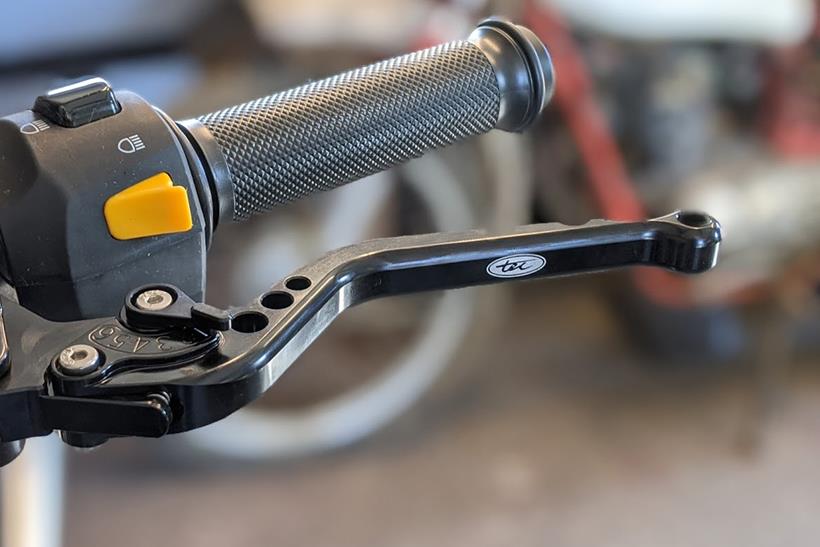
Is it easy to shift gears on a motorcycle? While it may seem clunky to begin with, you’ll soon build up the coordination required to do this quickly and smoothly, without even thinking about it. It’ll become second nature.
It’s also worth noting that many bikes won’t let you start them without the clutch engaged. This is to prevent you from starting the engine with the bike in gear, which would cause it to leap forwards and potentially cause you or it some damage.
How do I know which gear I’m in?
This is a very good question, and on many older bikes the only way to tell is to count your way up and down the gears. This is a good habit to get yourself into anyway, regardless of the bike you ride as it will mean you are always aware of it without taking your eyes off the road.
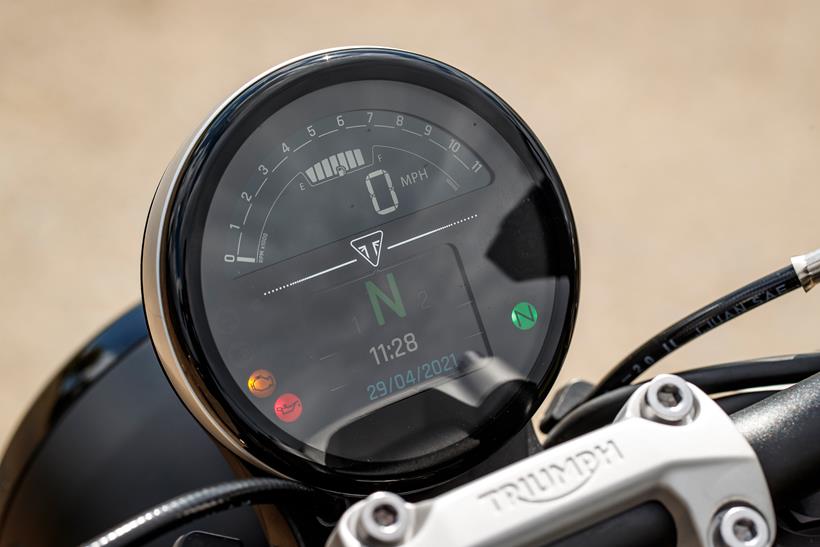
However, newer machinery can have a gear indicator on the dash that tells you. Furthermore, most bikes nowadays have a green neutral light (as you can see above) to show when you’re not in gear.
Why do you need to change gear on a motorcycle?
Because the higher the gear, the faster you’ll be able to go. However, the lower the gear, the faster you’ll be able to accelerate. A combination of the two factors means you’re able to use gears to ride around at low speeds or quickly, depending on the road and traffic conditions.
In lower gears you can also have more engine braking, which means the bike is more stable in corners and in slippery conditions. People often downshift on the way into a corner.
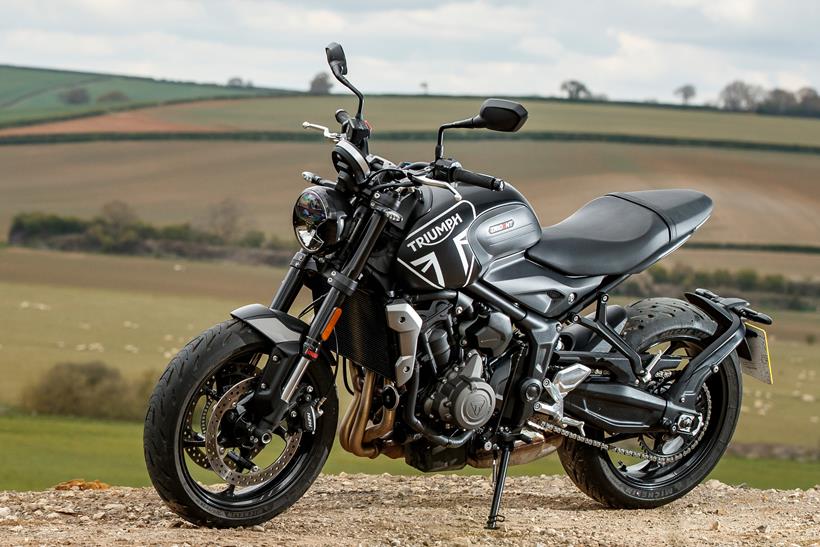
What if I miss a gear?
When you’re learning (and sometimes when you’re more experienced) it can be easy to ‘miss’ a gear. This means that you’ve failed to find the gear you’re looking for in the gearbox, and the bike usually ends up in neutral, leaving you with no engine performance.
In this situation, don’t panic: simply repeat the five-step process above and you should have better luck. If you find you’re doing it a lot, consider heading to an empty car park to get some practice.
What is a motorbike quickshifter?
This is a device that allows the rider to change gear without using the clutch. There are two types: up only, which will only operate on the way up the gears, and up-and-down, which works both ways, accompanied by a blip of the throttle on down-changes to keep things smooth. It makes riding slightly easier and often more entertaining.
Clutchless up-shifts
Here’s one for the more advanced rider. Because of the way a motorcycle gearbox works, it is possible to shift up through the gearbox without using the clutch at all. It is a simple technique to adopt but trickier to master and has been employed by racers since long before quickshifters and seamless shift gearboxes were a thing.
All you need to do is put a little pressure on the underside of the gearshift lever and begin to close the throttle. The gear will jump straight up and then you can reopen the throttle.
Without care, it can be a jerky and severe gear change method and put more strain on the drivetrain components and clutch, too. Some manufacturers specifically warn that the clutch should be used for all gear shifts. You cannot employ a clutchless down-shift unless you have an autoblipper or are able to match the revs yourself, which is a complicated task.
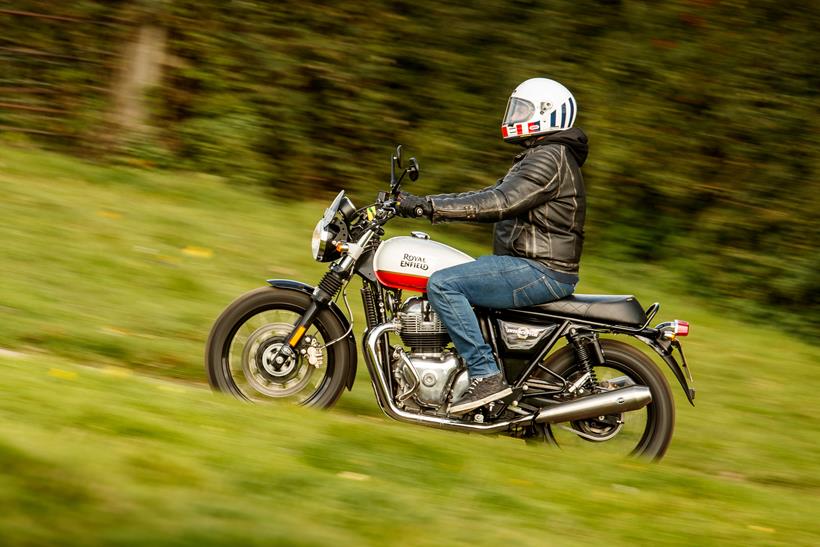
DCT and automatic motorbikes
Honda use a system on some of their models called a DCT (dual clutch transmission), which can change gear for you and does away with the clutch and gear lever. The motorcycle still has a traditional gearbox but the selection is made via a series of actuators.
The rider can override the system and change gear using up and down shift buttons on the handlebar if they wish. There are also aftermarket conversions available, most often used by those who cannot use their left leg or amputees.
Electric motorbikes often don’t have gears at all, while Kawasaki’s Ninja 7 Hybrid and Z7 Hybrid models have a manual gearbox controlled by levers on the handlebars plus the option of automatic running in ‘eco’ mode.
FAQs – changing gear on a motorcycle
How do you shift from 1st to 2nd gear on a motorcycle?
From first gear (lever pushed all the way down), come off the throttle, pull in the clutch lever, hook your left toes underneath the gear lever, pull up, and then smoothly release the clutch before accelerating away.
What not to do when shifting gears on a motorcycle
Don’t get things in the wrong order – make sure you nail your timings to keep things as smooth as possible.
Do you shift down gears on a motorcycle when coming to a stop?
Yes, always shift down through the gearbox when stopping, because this will help you to slow down and keep things smooth, while also allowing you to use the throttle again instantly if things change and you need to speed up again. You may not want to go right down to first gear, but certainly second will give you the headroom to get out of trouble should you need to make a swift getaway.






